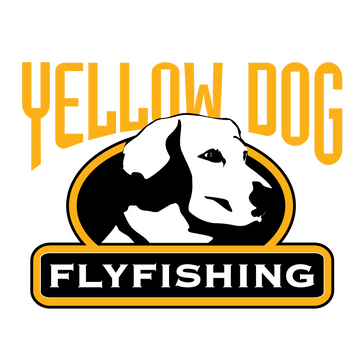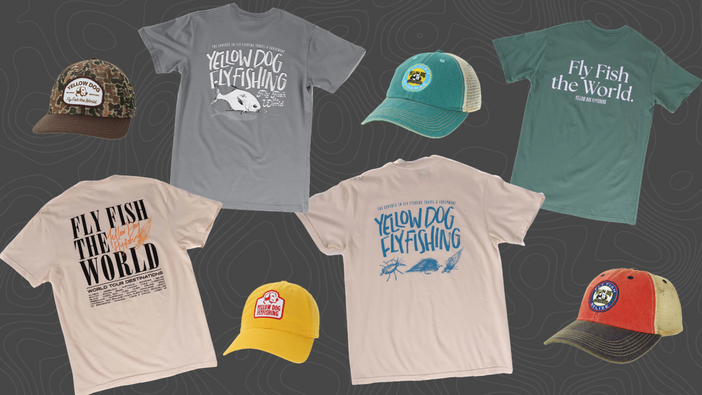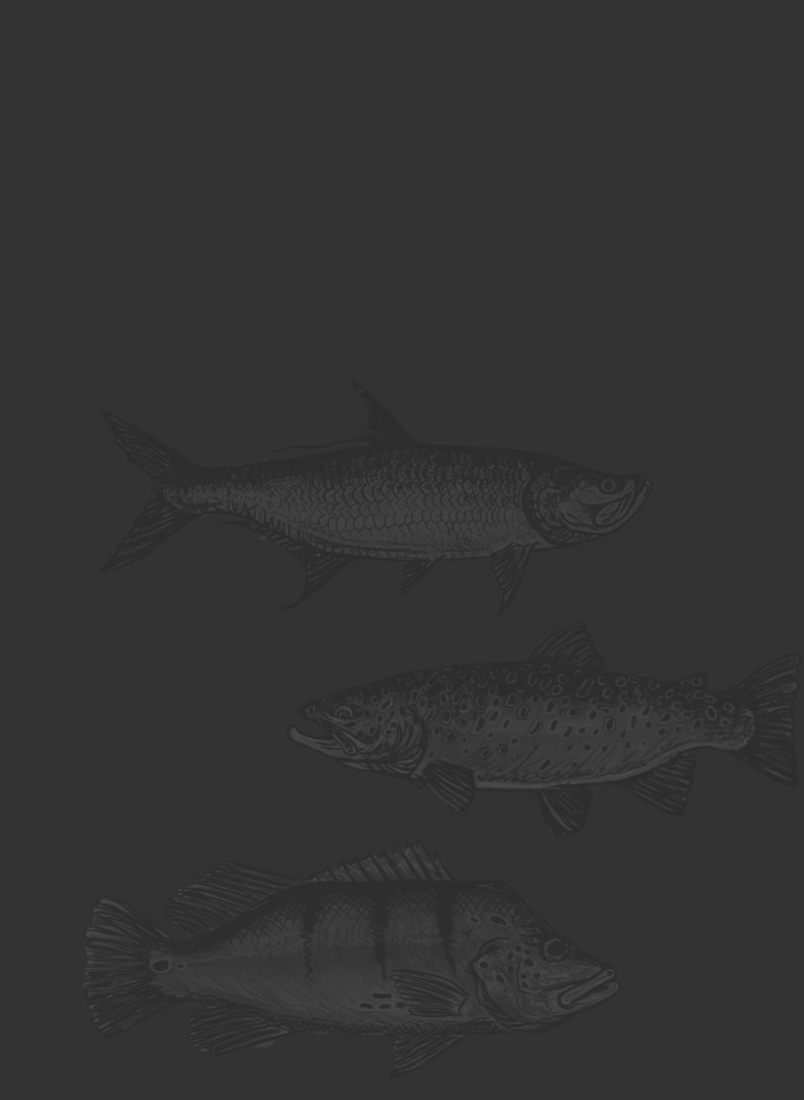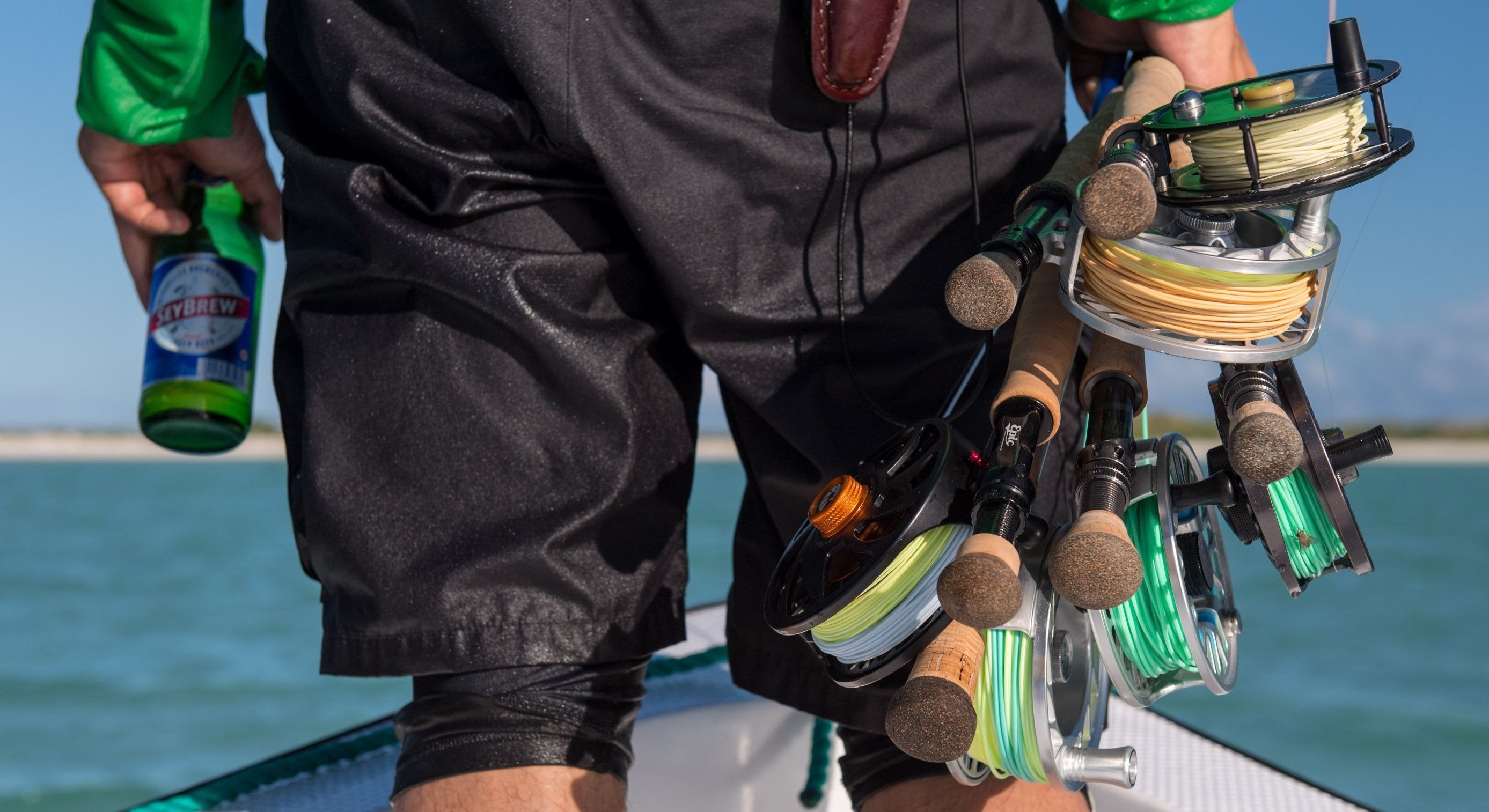There are few, if any, insects more synonymous with fly fishing for trout than the blue-winged olive (BWO). From coast to coast of North America's expansive trout country, the blue-winged olive is generally one of the most common and predictable hatches of each year.
Often, blue-winged olives are some of the first bugs to hatch in the early Spring, and the final reliable hatch of the Fall fishing season. They are also known to hatch in great numbers under cloudy skies and a bit of precipitation, bringing once dormant fish back to the surface in a frenzy. Braving what many to consider to be an uncomfortable fishing day can mean having a prolific hatch all to yourself as rain or flurries dapple the river and trout rise in droves to feed on floating duns.
This article will take a look at some of the most productive BWO flies, ranging from nymphs, to emergers, to finally duns and spinners. Having a selection of flies to cover all of the phases of metamorphosis ensures you can adapt your approach and increase your catch rate.

Blue-Winged Olive Nymphs
The subsurface nymph form of the BWO is a critical food source throughout many trout streams. Perhaps the most recognized nymph in the world of fly fishing, the pheasant tail nymph, successfully imitates a number of mayflies, the blue-winged olive included. The pheasant tail can be deadly, but there are a few other staple patterns you should consider. Size is going to be important here, and nymphs should range from size 16 at the largest, down all the way to size 22.
1. Juju Baetis
Charlie Craven's Juju Baetis is productive everywhere it goes. Firstly, the size and profile of the fly is excellent, perfectly imitating a baetis nymph. The use of tinsel as a wingcase refracts just the right amount of light to grab a trout's attention or replicate an air-bubble trapped on the insect. The final addition of UV resin along the nymph's body does an excellent job of amplifying the wingcase and segmentation of the fly's thorax, while also increasing durability. Without question, this should be in your box as a do-it-all mayfly nymph.
2. Micro Mayfly
Mike Mercer's Micro Mayfly is a testament that flies don't need to be overly-complicated to get it done, borrowing many of its traits from the age-old pheasant tail nymph. The profile is key on the micro mayfly, with a few fibers of pheasant tail at the rear, a slender body of stripped peacock herl, and a large thorax comprised of olive dubbing. A large copper bead ensures this fly gets down quickly, though tyers can substitute tungsten or glass beads to change the weight of the fly as needed. A great pattern for "ticking bottom" or working through deeper runs.
3. Two Bit Hooker
Another Charlie Craven pattern, the Two Bit is a deadly baetis imitation. The Two Bit's most notable feature is its use of two smaller tungsten beads as opposed to one heavier bead. Craven did this to ensure the fly got down quickly without creating too much bulk at the head, and the profile of the fly is relatively slim for such a heavy pattern. Tied in a variety of colors, you cannot go wrong with a two bit operating in a dry-dropper setup, or as your point nymph for fishing subsurface.

Blue Winged Olive Emergers
If you are witnessing trout rising to feed but do not see bugs present on the surface, they are likely feeding on emergers. Emergers are an important component of a trout's diet as they make relatively easy-picking. A good emerger pattern should ride just beneath the surface of the water, or function as a low-riding dry fly just visible to the naked eye.
4. WD-40
The WD-40 imitates both emerging baetis nymphs and midges, making it a great fly to utilize when you aren't sure what to tie on. It is a very quick and easy fly to tie, traditionally utilizing mallard flank fibers for the tail and wingcase, and a dubbing for a thorax. Traditionally, the WD-40 is tied unweighted, and is going to fish just underneath the surface as an emerging BWO, but the addition of a bead is a great option to fish it as a traditional nymph pattern.
5. Bat Wing Emerger
The Bat Wing Emerger is a great little pattern for a number of emerging mayfly imitations, but the original baetis pattern is a staple BWO emerger. The use of a glass bead allows for the Bat Wing Emerger to just barely break the surface film like a blue-winged olive transforming into a mature dun. An olive biot is used for the thorax, offering a really natural segmentation without the use of heavy ultra wire. The most unique component of the Bat Wing Emerger is the use of "waste," or base of partridge or hen feathers to create the wings. Primarily fished as an emerger, the Bat Wing could also imitate a crippled or spent olive.
 6. Film Critic
6. Film Critic
The Film Critic comes in a number of variants for good reason: it is a killer emerger or cripple pattern. This is not the easiest fly to tie, but the reward justifies the effort. The fly rides low, perfectly imitating a mayfly working to rid its shuck in the surface film. Quigley, the original tyer, incorporated a large, forward-facing post (over the hook eye) that rides vertical during a drift. This both imitates an emerging set of wings, but also allows for the angler to track the fly (especially in faster water). It isn't uncommon to lose track of your fly when fishing emergers, and the only solution is to set if you see a rise, but the Film Critic provides an increased level of visibility.
7. RS2
The RS2 is a simple fly to tie, but should 100% be in your baetis fly box--particularly in olive. It has been around for decades and continues to fool fish everywhere, especially on tricky tailwaters or on technical spring creeks. The RS2 is tied in a number of variations, but the basics remain the same.
The defining features of the fly are the two microfibbets splayed at the tail and a small wing of either poly yarn or CDC. The fly can be fished in a number of ways, from subsurface as a nymph (especially with the addition of a bead), to being fished as a more traditional emerger pattern just along the surface film, or treated with floatant and fished as a dry. Few flies can accomplish this level of versatility, hence the RS2 being a staple pattern for over half a century.
Blue Winged Olive Dry Flies
This is what we all think of when discussing blue-winged olives--rising trout gorging themselves on the tiny "sailboats" of mature duns coming downriver. There are a ton of different blue-winged olive dry flies on the market, but these are a few that have yet to let us down.
8. Sparkle Dun
Craig Mathews' sparkle dun has been fooling area trout for decades. The fly is composed of only three elements: z-lon, dubbing, and deer or elk hair (comparadun hair gives the best combination of splay and bouyancy). The fly can imitate a mature blue-winged olive or both an emerger and crippled dun, making it incredibly versatile pattern. The bit of z-lon coming off the back imitates a trailing shuck still attached to a recently emerged baetis, and could realistically be substituted with another quick-drying, synthetic fiber. The splayed deer hair is helpful for keeping track of what is an excellent low-riding pattern and sheds water well after repeated casts.
As a side note, the fabled comparadun is also a great option, which is very similar in appearance to the sparkle dun. The only difference is the z-lon shuck on the sparkle dun is replaced with micro fibbets or hackle fibers to simulate a mayfly's tail.
9. Rusty Spinner
The Rusty Spinner is another versatile pattern and imitates a lot more than just a spent blue-winged olive. After mayflies reproduce, they fall back to the water, "spent" of their energy and at the end of their life cycle. The coloration of some mayfly spinners turn a rusty brown or brown, including blue-winged olives. These spent flies make for easy calories, and trout key in on them most typically in the evening or early morning after productive hatches. The Rusty Spinner is a simple enough pattern comprised of few materials, but its profile is second to none with its full-length tail and splayed wing of synthetic fibers perfectly emulating the downed wings of a baetis. If you aren't getting takes on a rusty spinner, try sizing down before switching patterns.
10. 401K Baetis
The 401K Baetis is a super neat pattern that rides low, but is still easy to spot with the use of a hi-vis wing. The combination of CDC and a few turns of hackle keep this fly on top the water without riding too high. If you're fishing at distance or in low-light scenarios, this is a great pattern for keeping track of your fly without overdoing it and spooking wary fish.

11. CDC Biot Comparadun
Yes, another comparadun variation, but this pattern warrants its own spot in the top blue-winged olive patterns. Instead of the use of dubbing, the body of the fly is comprised of biot which accomplishes two goals: firstly, it offers a natural segmentation, and secondly, the biot will float a bit lower in the water column than dry fly dubbing.
The use of CDC for the wing ensures the fly floats well with floatant, but lands as soft as a fly possibly can. This is a great option for a technical spring creeks or for targeting fish in slow-moving or low-water conditions.
12. Last Chance Cripple
We would be remiss if we didn't mention Rene Harrop's Last Chance Cripple, designed to imitate a crippled or emerging dun. This fly comes in a number of variations, from pale morning dun to larger drake imitations. The tail is sparse but sophisticated, with a combination of natural fibers and synthetics, imitating both a mayfly's caudal filaments and the remainder of a trailing shuck. A goose biot body makes for a slender profile, and the combination of hackle and a CDC wing combines to replicate a dun whose wings have failed to entirely emerge. The result? An easy meal trout rarely turn down.

The blue-winged olive hatches of Spring and Autumn are some of the most fun of the year and target fishing with small dry flies makes you a better angler. After a long winter, seeing a bounty of bugs pass by lifts our spirits and is a bittersweet way to end the warmer fishing months. As winter sets, they occasionally appear in great numbers--especially when the weather turns sour. There is nothing better than a quiet river, all to yourself, with plenty of bugs and rising fish.
Related Articles:
- The Top Streamers For Trout
- The Top 5 Spruce Moth Flies
- The Top 12 Pale Morning Dun/PMD Flies
- How to Choose Flies for Dry Fly Fishing
- 7 Favorite Flies for Spring Trout Fishing
- The Top 8 Hopper Flies
- The West's Best Hatches and Where to Fish Them
- A Guide to Midge Flies for Trout
- The Top 9 Mother's Day Caddis Flies






























